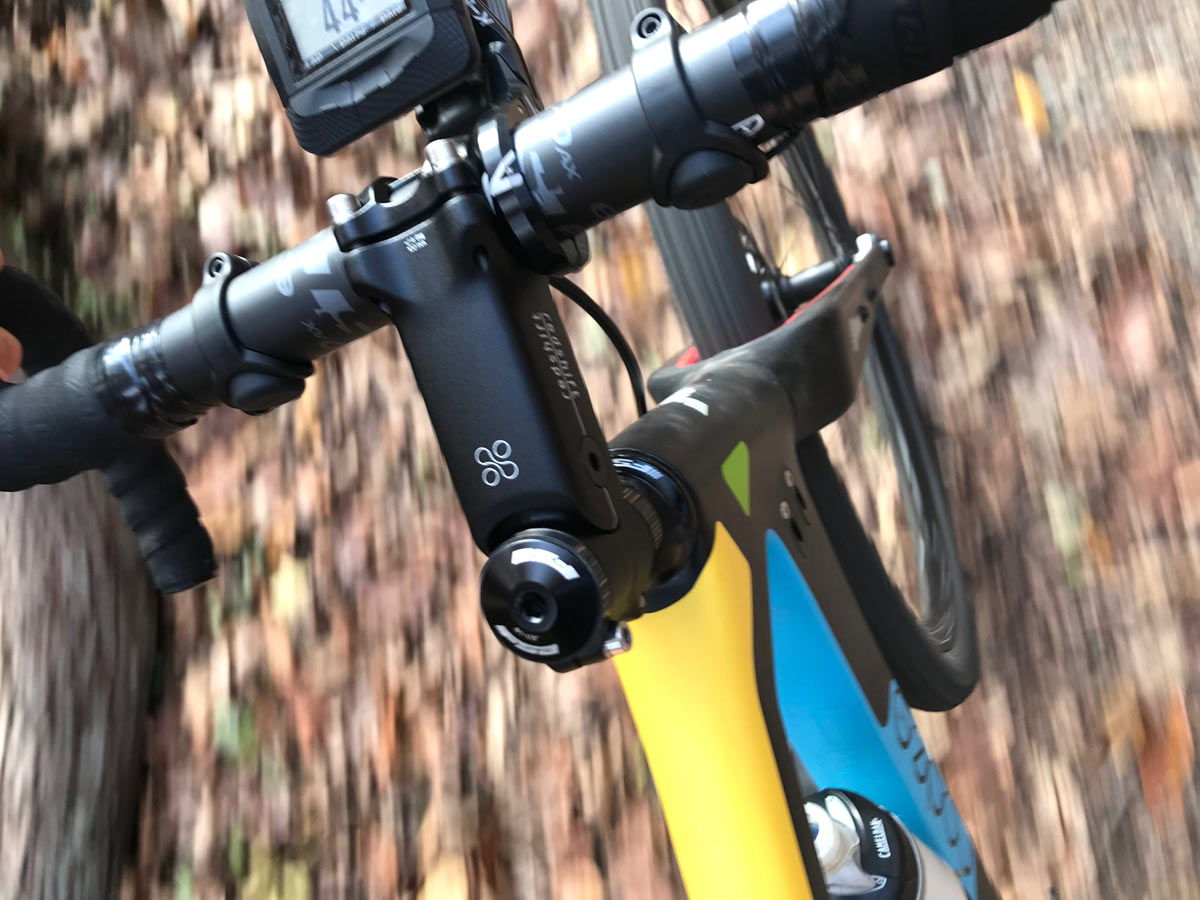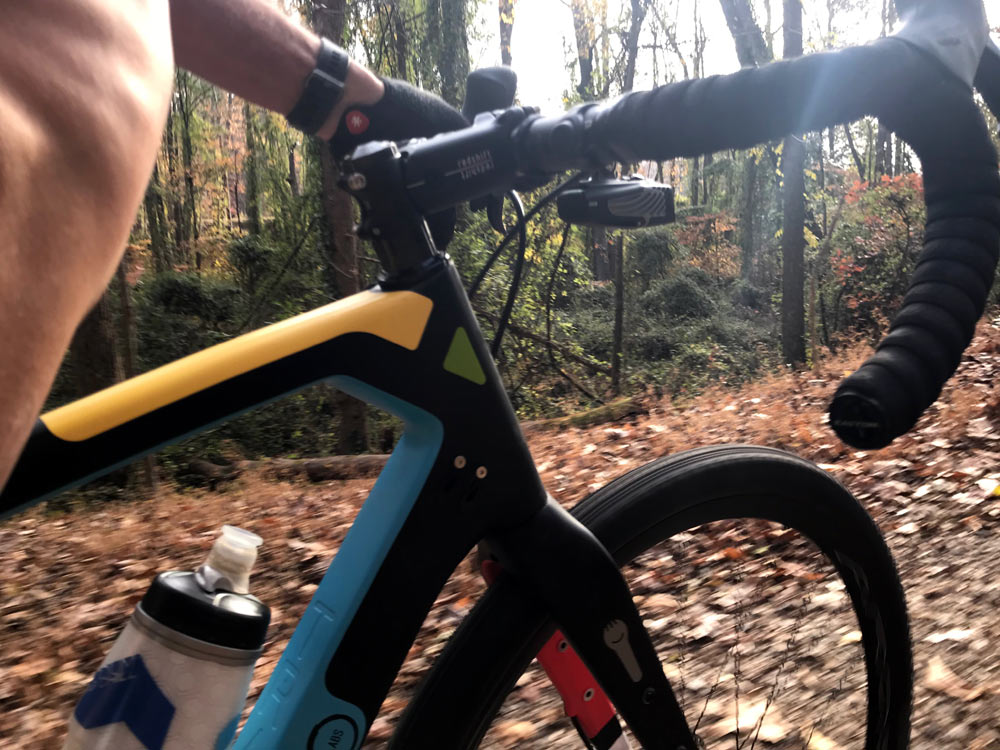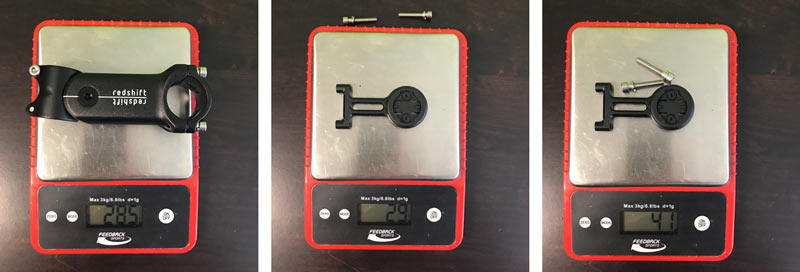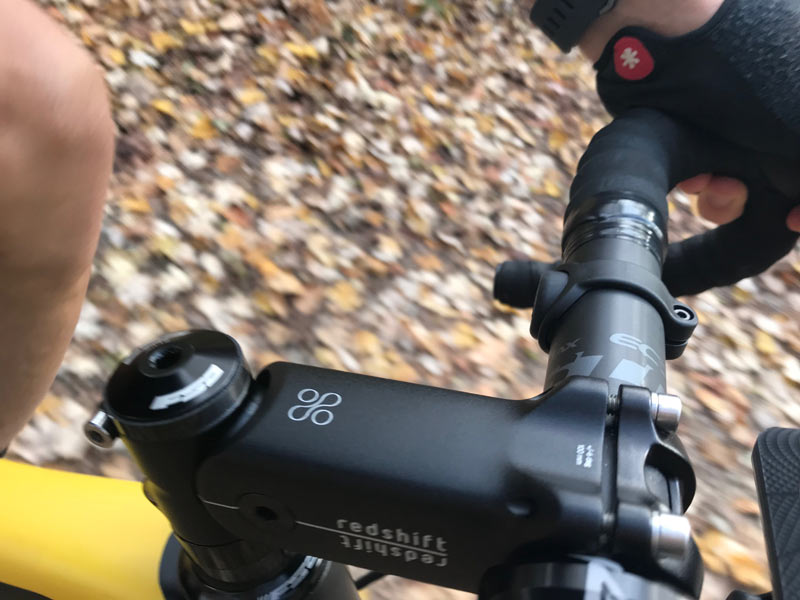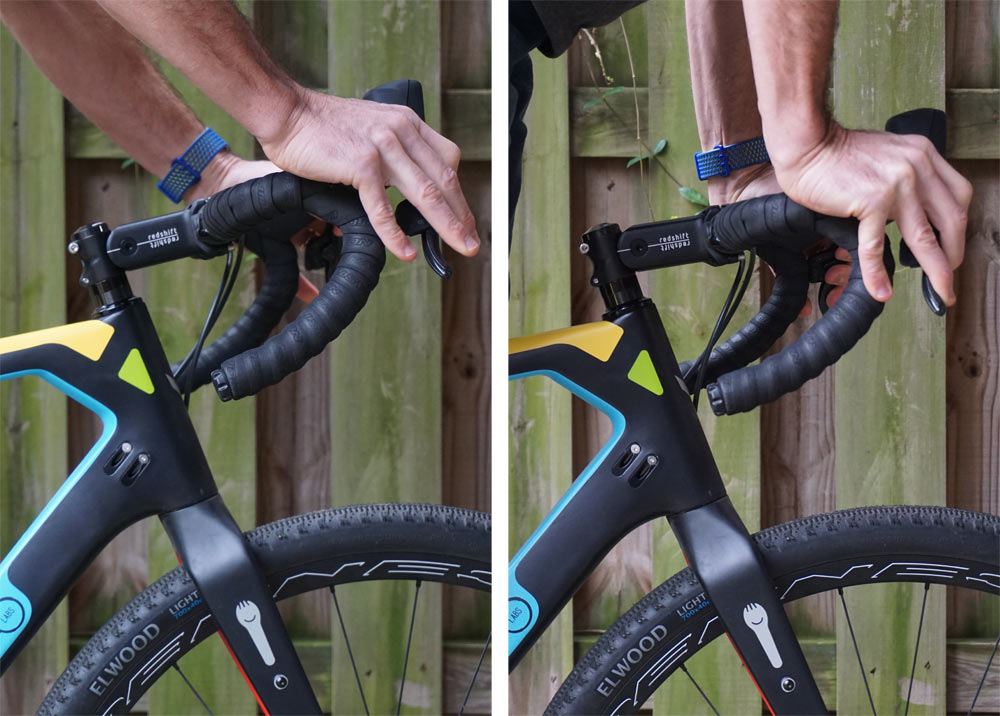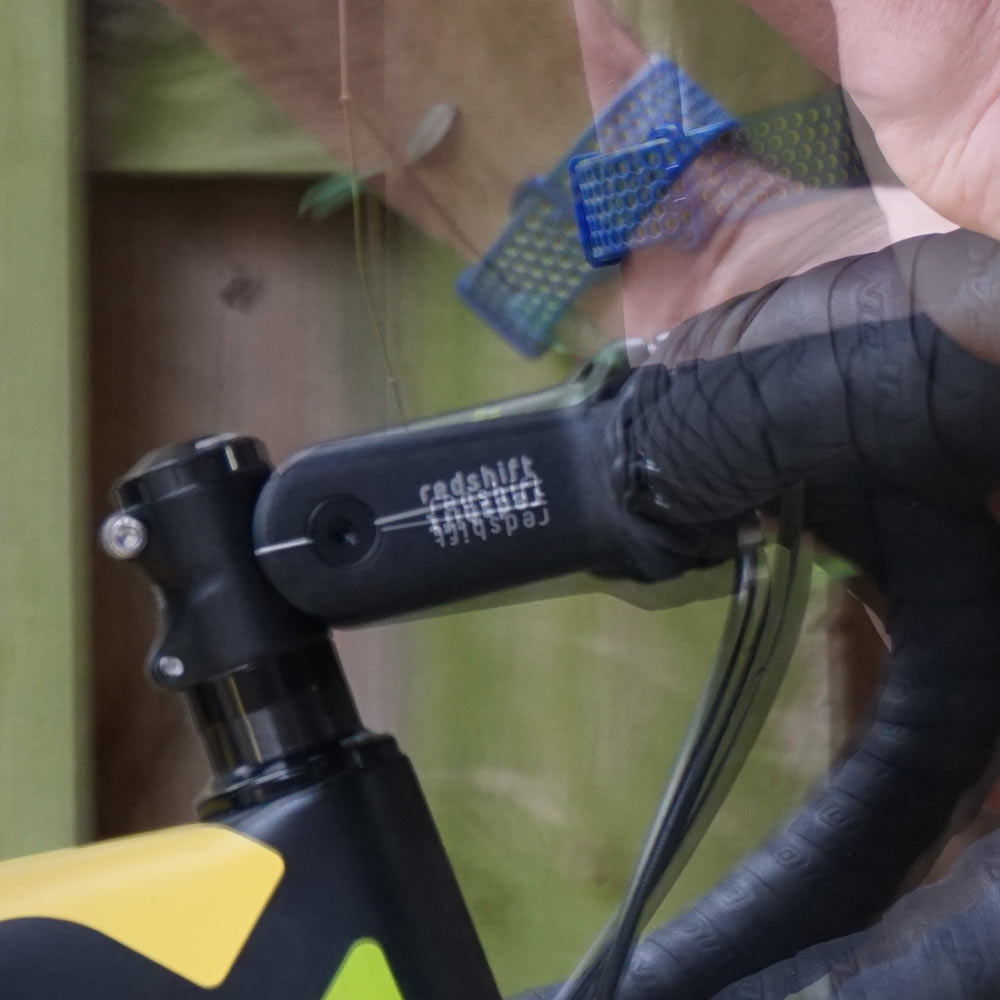I’m kicking myself for not installing this sooner.
The Redshift Sports ShockStop suspension stem has been sitting in our office for about a year. Technically, a pre-production version was here for a year, a final production model showed up in August, which is what’s tested in this review. Founder Stephen Ahnert had been pleasantly persistent throughout the time, immensely patient with my lack of installation and testing. Honestly, I just didn’t want to. Turns out my concerns, which centered mainly around thinking it would bob incessantly and lead to a sloppy front end, were completely baseless. You know what they say about assuming, right?
Finally, he convinced me to give it a shot, and I’m glad I did.
The ShockStop stem uses a pivoting body with an adjustable elastomer spring to absorb bumps. It’s that simple. One of the first questions they always get is probably obvious to anyone that’s been riding since the early 90’s: “Isn’t it just like the Softride Stem?”
No, and here’s their rebuttal, summarized: Those were big, heavy, ugly, had too much travel and simply didn’t hold up. They were designed for mountain bikes, and as such, were using pivot designs from the beginnings of MTB suspension, which developed play and weren’t very stiff. And, being designed for mountain bikes, were trying to provide far too much travel for their position on the bike. Add in a lack of damping and you had a bouncy, floppy device throwing your cockpit geometry out of whack.
Fast forward 20 years and we have 3D forging, rock solid pivot and axle designs, and more modest travel aspirations designed around road & gravel bikes.
DESIGN & ACTUAL WEIGHTS
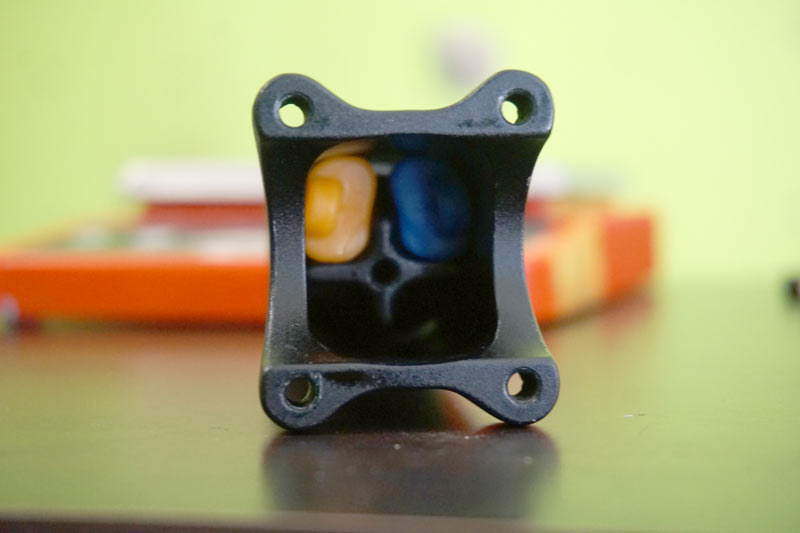
First introduced in 2015, the ShockStop stem uses a 3D forged alloy body that, from a distance, looks just like any other stem. The suspension parts are hidden inside the body, allowing for traditional aesthetics, another major improvement over prior options.
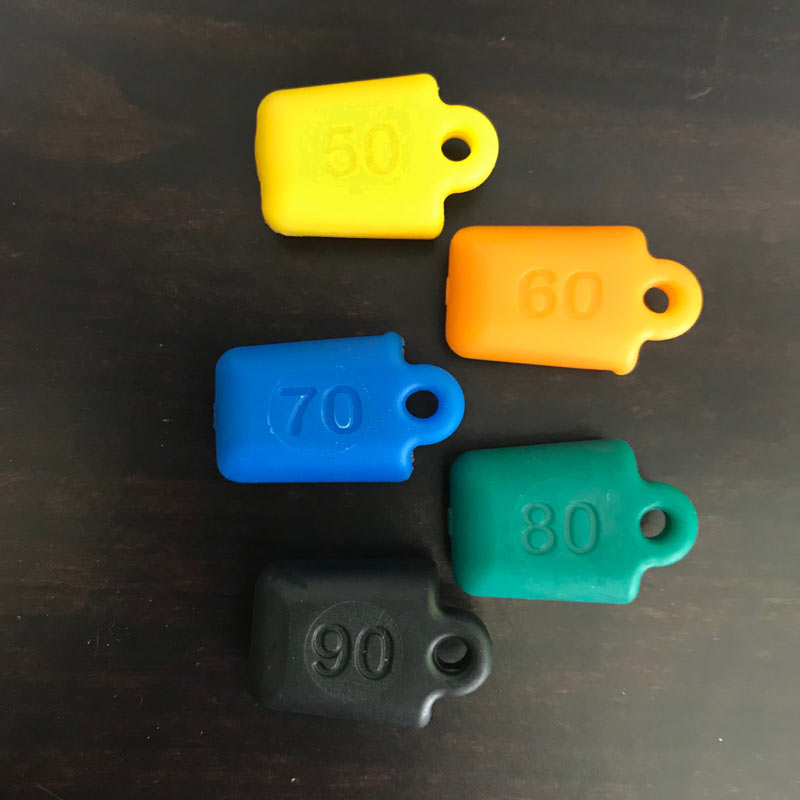
Travel is limited to 1-2cm, with the range coming from how you set it up. The ShockStop Stem ships with five different elastomers, giving it the ability to support lightweight climbers up to 300lb Clydesdales.
Our 100mm stem weighed in at 285g. The optional out-front computer mount is available with Wahoo or Garmin nests and includes two longer bolts that weighs in as a system at 41g. Subtract a few grams since you’re replacing two of the stem bolts and it’s probably at about 315g all in. The ShockStop Stem is available in 90/100/110/120 lengths with +/-6º rise, and a 100mm 30º rise. All are designed for 31.8 handlebar diameters, but shims to fit 25.4/26.0 bars are available for $9.99.
INSTALLATION VIDEO & NOTES
The video above is from Redshift Sports and walks you through the entire process. The basics are as follows:
- Remove old stem.
- Remove Shockstop’s faceplate and ensure elastomers are on top.
- Install ShockStop stem, adding or removing steerer tube spacers as needed*.
- Remove internal wedge and swap in desired spacers using their body weight guide.
- Reinstall wedge, being careful not to over tighten bolt.
- Install handlebar and replace faceplate.
- Adjust handlebar angles and go ride.
*Their instructions say to cut your steerer so that the top of the stem sits just a couple millimeters above the top of the steerer. We confirmed with them that this is not necessary and that their video install mentions this only to cover their bases with folks who don’t already know that your steerer tube should rest a couple millimeters below the top-most spacer or stem. It’s OK to have spacers on top of this stem.
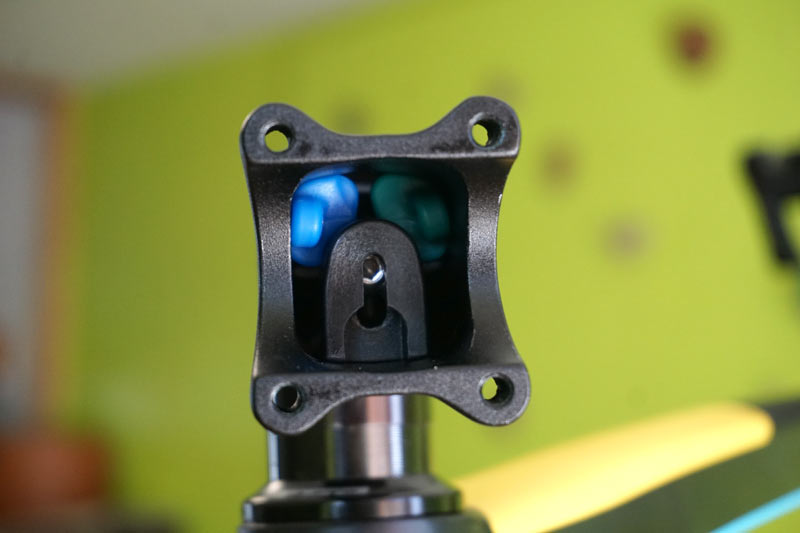
The system is rated for riders up to 300lbs (136kg). The modular design lets you test different durometers to get it as soft or firm as you want. I started with the 80+70 as recommended for my weight, but will be testing an 80+60 combo to see if adds a bit more vibration damping. As is, the ShockStop Stem is a bit stiff, but they say there is a break-in period where the elastomers will soften ever so slightly and settle in. Beyond that, their lifespan is plenty long enough, and they say temperature fluctuations have minimal impact on their performance.
One note: We received our test stem in August, which came with lower quality Chinese bolts for the wedge and face plate. As of September 2017, all stems started shipping with higher quality US-made bolts, and here’s why: The originals were strong enough, but the hex holes were too easily stripped. Once stripped, the wedge was essentially permanently installed and the elastomers could no longer be swapped. This happened to our test sample. If you already own this and want the newer bolts, just email them and they’ll swap ’em out for you, no charge.
RIDE REVIEW
My first ride on the ShockStop was an eye opener. Benefits were immediately apparent; it took the edge of direct root impacts, even with the already forgiving 700×40 Terrene Elwood gravel tires taking the brunt of it. Dropping off curbs and nailing potholes yielded equally pleasing results. My opinion is that it’s geared more for absorbing bumps than reducing vibrations, but a lighter elastomer setup might help there. For me, it’s more of a last line of defense against sudden impacts, helping keep my wrists, elbows, triceps and shoulders fresher over the long haul.
My biggest concern was that the stem would provide too much travel too easily. When I first hop on a bike with the Lauf Grit gravel suspension fork, the initial feeling resembles that of a handlebar slipping and rolling forward. I get used to it pretty quickly, and I love that fork, but my fear was I’d have that same feeling with the ShockStop. And that it might move around too much during out-of-the-saddle efforts. Fortunately, it does neither. I should have used this much sooner.
The photos above and below show it with normal seated riding pressure (left) and all my weight as far over the front as possible (right).
Here’s a layered version, which shows that it’s only moving about 1cm at the front of the stem. Standing up to pedal, I could barely notice the vertical movement, and absolutely no torsional (twisting) or horizontal movement. The stem’s boxy shaping and oversized pivot design prevent any unwanted flex. Stephen says they use a very high torque bolt design with near-permanent Loctite on the bolts so it won’t come loose.
The product seems to live up to the hype. It’s the first (but not last) mod to this year’s World’s Funnest Bike Project, and other than swapping in the replacement they’re sending with the new hardware, I have no plans to take it off. If you’re looking to smooth the ride on your road, gravel or cyclocross bike, it’s worth a look.
Retail is $149.99. The computer mount sells for $39.99, or bundle them together for a $10 savings. Interested? They’re running a holiday promotion, use code “REDHOLIDAY17” through the end of 2017 for 20% your purchase.
